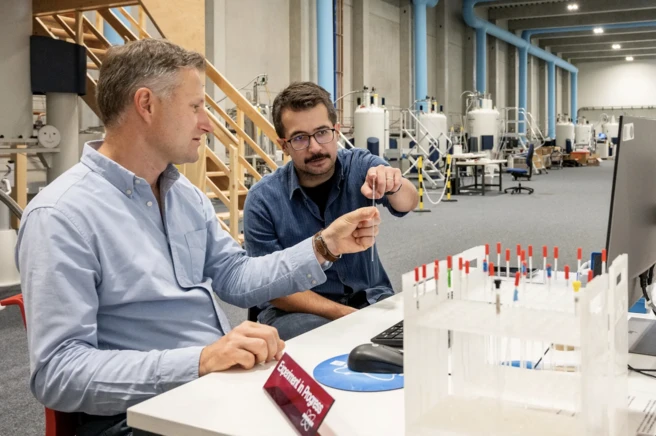In the fight against disease, programmed cell death – also known as apoptosis – is a key protective function of the body. It breaks down cells that are damaged or have undergone dangerous changes. However, cancer cells often manage to override this mechanism. A research team at the Technical University of Munich (TUM) has now succeeded in identifying a new molecular switch in this process and elucidating how it works.
The activation and deactivation of apoptosis is a promising field of research in basic biomedical research. The team led by Prof. Franz Hagn from the Chair of Structural Membrane Biochemistry at the TUM School of Natural Sciences has now discovered a new switch: "Many research teams worldwide are working on the exciting topic of apoptosis and its targeted control. The big advantage is that we are dealing with a highly efficient, evolutionarily developed regulatory mechanism. So, we don't have to invent something completely new, but can use the appropriate structural methods to learn from nature's optimized processes."
Cellular mechanism described in detail
To prevent healthy cells from accidentally destroying themselves, the apoptosis system is very balanced. The researchers were able to show that the protein Bcl-xL, an apoptosis inhibitor that prevents overreactions, can be overridden by another protein called VDAC1 when necessary. The activation of this essential protein in the mitochondria, the powerhouses of the cell, is mainly triggered by increased cell stress, which can be an indication of abnormal cell development. VDAC1 then unfolds part of its structure, connects it to Bcl-xL, and thus deactivates the inhibitor.
Dr. Umut Günsel and Dr. Melina Daniilidis, co-first authors of the study in Prof. Hagn's team at the Bavarian NMR Center, which is jointly supported by TUM and Helmholtz Munich, emphasize: "In our study, we used high-resolution structural methods such as nuclear magnetic resonance (NMR), X-ray crystallography, and cryo-electron microscopy to investigate how the VDAC1 protein changes under stress conditions. We also combined this data with biochemical functional experiments to show that VDAC1 actually binds to the brake protein Bcl-xL, thereby promoting apoptosis."
Medical applicability still open
This newly understood regulatory mechanism opens up possibilities for the search for active substances that could influence the behavior of VDAC1. In cancer therapy, for example, future drugs could specifically enhance activation and thus drive cancer cells to cell death. In neurodegenerative diseases such as Alzheimer's or Parkinson's, the opposite would be true. There, one could try to block the unwanted death of nerve cells. Deactivation of VDAC1 could also be helpful in certain heart diseases, such as ischemia-reperfusion injury.
However, there is still a long way to go before these new findings can be applied clinically. The search for appropriate active substances can now begin. Whether it will be successful is completely open and will become clear after further experiments.
Publication
Melina Daniilidis, Umut Günsel, Robert Janowski, Kai Fredriksson, Georgios Broutzakis, Kira D. Leitl, Dierk Niessing, Christos Gatsogiannis, and Franz Hagn: Structural basis of apoptosis induction by the mitochondrial voltage-dependent anion channel, published in Nature Communications, October 27, 2025, https://doi.org/10.1038/s41467-025-65363-1
Further information and links
Contact to this article
Prof. Dr. Franz Hagn
Technical University of Munich
TUM School of Natural Sciences
Lab of Structural Membrane Biochemistry
Bavarian NMR Center (BNMRZ)
+49 89 289 52624
franz.hagn@tum.de
Technical University of Munich
Corporate Communications Center
Ulrich Meyer
presse@tum.de
Teamwebsite
Original article: https://www.tum.de/en/news-and-events/all-news/press-releases/details/new-switch-for-programmed-cell-death-identified
